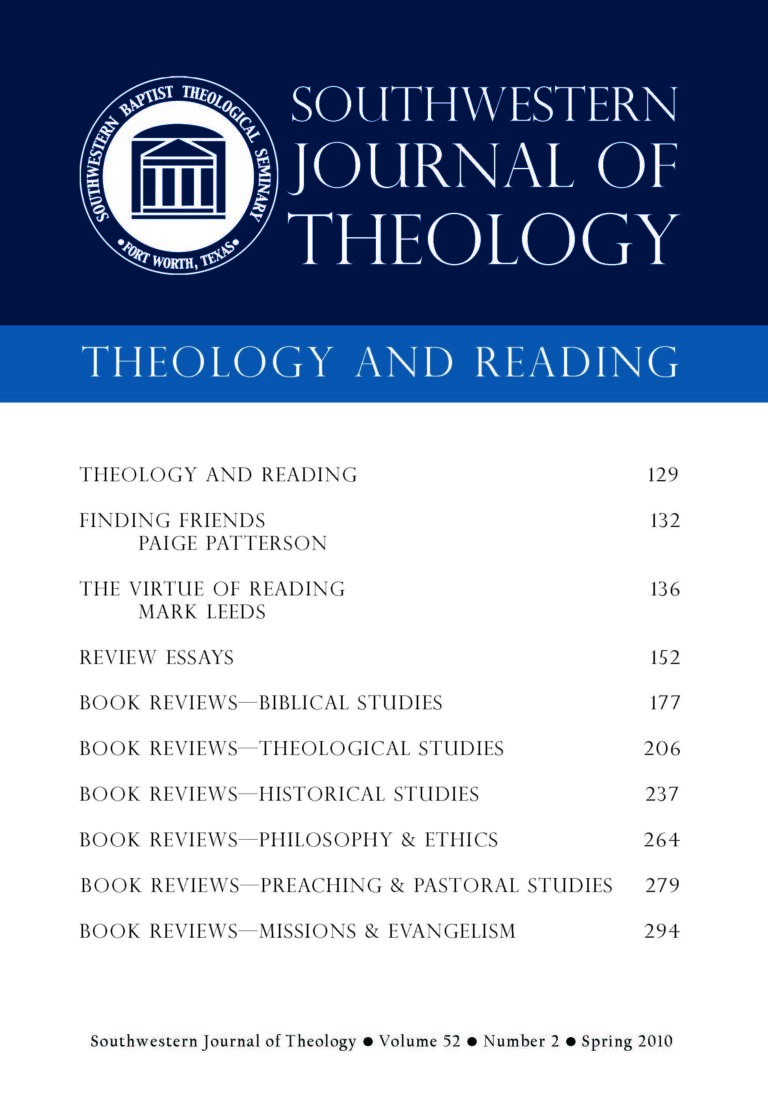
Theology and Reading
Southwestern Journal of Theology
Volume 52, No. 2 – Spring 2010
Managing Editor: Malcolm B. Yarnell III
Edited by Jeffrey P. Greenman, Timothy Larsen, and Stephen R. Spencer. Grand Rapids: Brazos, 2007. 288 pages. Paperback, $24.99.
This volume is the second in a series, designed to explore the history of Christian thought in conversation with a given biblical text. The earlier effort was reflected on the book of Romans in the writings of outstanding leaders and theologians through the centuries. This book is a collection of essays on the concepts and teachings of the Sermon on the Mount in the writings of historical Christian leaders. This effort is unique because it utilizes a cross discipline approach, drawing from biblical studies, church history, historical theology, constructive theology, pastoral theology, spiritual and moral formation, and ethics.
The writers of these essays display a variety of styles. Some, like Margaret Mitchell who wrote on John Chrysostom, utilized a more technical analysis of the original language of that church father, while others, like Robert Wilken on Augustine, reflected a more devotional approach. One common factor in every personage studied is that their writing on the Sermon on the Mount was reflective of their life and times, as well as their unique theological perspective. For example, Hugh of St. Victor used a system of virtues called the “Five Sevens” by which he interpreted the Beatitudes. Martin Luther’s interpretation of the Sermon on the Mount was a polemical call for battle against all enemies, particularly Satan. John Wesley’s focus on inner godliness and experiential holiness colored his management of these teachings of Jesus.
There are two unique chapters contrasting two theologians and their unique interpretations on the Sermon on the Mount. One compares Dietrich Bonhoeffer and John Howard Yoder concerning their positions on pacifism, while another contrasts the liberationist position of Leonard Boff with the natural law interpretation of Pope John Paul II. There certainly are elements of commonality in most of those writers, both ancient and modern, but their differences are even more evident. One particularly helpful contribution of this volume is the overview it provides for many students, pastors, and lay leaders of historical theology. One has not only a fascinating variety of interpretations of the Sermon, but also a wealth of insights on the Christian faith as it was lived out across the centuries in a myriad of contexts.





